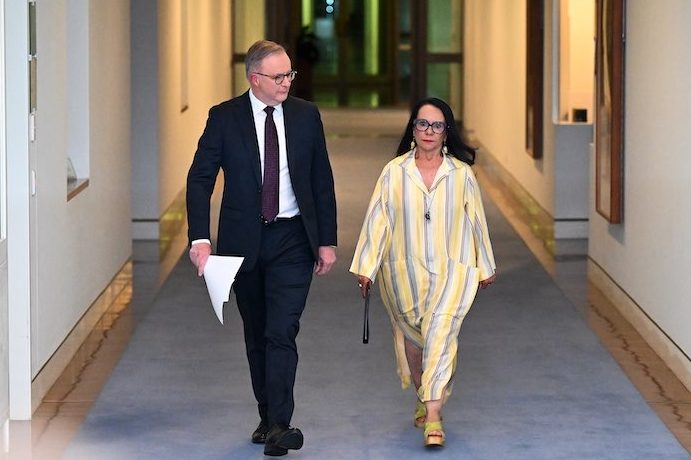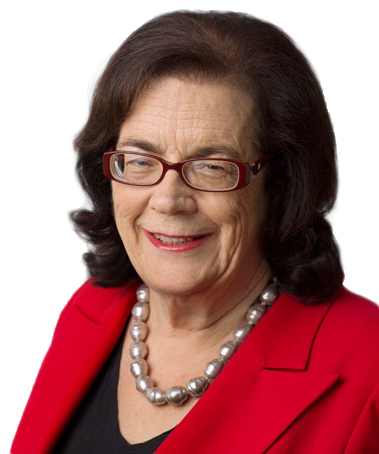
Can the Albanese government show muscle in indigenous policy? Political columnist MICHELLE GRATTAN says one test is coming next week.
When Anthony Albanese is asked what his government’s indigenous affairs policy is after the referendum’s failure, his response boils down to: watch this space.

On Tuesday the government will present its latest implementation plan for Closing the Gap, when it brings down its annual report on the progress (or lack of) towards the multiple targets.
Minister for Indigenous Australians Linda Burney says Tuesday’s statement will “commit to new actions that focus on making a practical difference”.
Albanese told the ABC this week: “The priority [is] very much on employment. How do we take the [Community Development Program] – which is essentially a work-for-the-dole program – and make it real, so it creates real jobs with real skills for indigenous Australians?”
History and evidence tell us incrementalism is not enough to make a big difference to the parlous condition of Aboriginal people in remote Australia. Equally, ambitions to transform how decisions are made and delivered have so far proved beyond governments.
This week’s blunt report from the Productivity Commission on the 2020 National Agreement on Closing the Gap told governments (federal, state and territory) real progress requires a massive change of ways and mindsets.
The agreement, dating from Scott Morrison’s time, is centred on power sharing and partnerships. But the review’s “overarching finding” is that there’s been “no systematic approach to determining what strategies need to be implemented to disrupt business-as-usual of governments”.
The commission heard from indigenous people that barriers to reform included “the lack of power sharing needed for joint decision-making and the failure of governments to acknowledge and act on the reality that Aboriginal and Torres Strait Islander people know what is best for their communities.”
“Unless governments address the power imbalance in their systems, policies and ways of working, the Agreement risks becoming another broken promise to Aboriginal and Torres Strait Islander people,” the report says.
According to the review, the commitment to shared decision-making is rarely achieved; government policy doesn’t reflect the value of the indigenous community-controlled sector; the required transformations of government organisations have barely begun; governments are not enabling indigenous people to own their own data; and there are issues around accountability.
Deirdre Howard-Wagner, director of research at the Australian National University’s Centre for Indigenous Policy Research, says the commission’s final report is stronger than last year’s (already forthright) draft report.
For example, it says the agreement “needs to be changed to recognise self-determination as the ultimate goal”. It is also “very clear on the desirable path forward” on data governance, shared decision-making and having an independent mechanism to oversee the implementation of the agreement, Howard-Wagner says.
Tuesday’s statement will not provide a response to the review. Burney says it will take some time to work through it with the Coalition of Peaks – the umbrella group for indigenous organisations – and state and territory governments.
Much has been said about the Albanese government’s caution in pushing a robust reform agenda generally. In indigenous affairs, it has been badly burned on the Voice, the defeat of which has also produced a more negative climate, seen for instance in the political debate about treaty and truth telling. As indigenous rights advocate Frank Brennan notes in a Eureka Street article this week, “There is a need to realise that the referendum loss now places the assimilation debate back on the national agenda.”
The Albanese government is likely to find some of the meat in the commission’s report too difficult. If it is to leave any mark on this vexed policy area, however, it must take more responsibility.
Michael Dillon is a former federal bureaucrat with extensive experience in indigenous affairs who also served as an adviser to Labor minister Jenny Macklin. He points out that the 1967 referendum was about giving the Commonwealth power to make policy for Australia’s indigenous people. But, he says, the 2020 agreement has, if anything, pushed responsibility back to the states and territories.
“The Commonwealth should step up and take a driving role in this agreement – and, indeed, in national indigenous policy generally,” argues Dillon, now a visiting fellow at the ANU. Key areas for reform include education, remote housing and remote employment, he says.
Specifically on the reform of the Community Development Program, which is about both income support and getting people into jobs in remote Australia, Dillon says the government should pick out several specific areas for development.
For example, jobs could be created to assist indigenous people in managing the enormous swathes of land they own under native title. Much of this land, in remote challenging parts of the country, can be a liability for them, because of feral animals and weeds, rather than the asset it should be. This employment would massively build on the existing successful rangers working-on-Country program, Dillon says.
Another initiative he suggests is expanding the indigenous workforce in the community services sector, including the National Disability Insurance Scheme.
Thirdly, in relation to remote housing, Dillon sees opportunity for creating indigenous maintenance teams to repair houses and facilities in remote communities.
Potentially, the energy transition could present prospects for indigenous people. Energy Minister Chris Bowen is co-developing a First Nations Clean Energy Strategy. Bowen points to projects in Canada involving indigenous people.
“A big proportion of Canada’s renewable energy is actually owned by their First Nations people, much, much bigger than in Australia. Now can we turn that ship around overnight? No, but do we have things to do? Yes. And are there some early signs of growth and encouragement? Yes. There’s been some big First Nations involvement in some big renewable energy investments, and I want to see much more of it,” Bowen told The Conversation’s Politics Podcast.
Dillon is emphatic that a very large injection of funds is needed to tackle employment and other areas of need in remote communities. “In remote Australia it’s a poly-crisis,” he says. “Every rock you pick up, there’s a scorpion.”
In his submission to the commission’s review, Dillon called for an assessment of the financial investments required to close the gap over the next decade or two.
“Without such an estimate, the community at large are left in the dark, forever thinking that the incessant tinkering around the edges by governments are in fact contributing to closing the gap, whereas in fact mere tinkering contributes to and sustains the maintenance of the status quo,” he wrote.
“While the estimated cost will be substantial, so too are the costs of not closing the gap; costs that will continue to fall regressively on the most disadvantaged segments of the Australian community.”
Next week’s implementation plan will be a test of whether the Albanese government can produce policy muscle in indigenous affairs.
On another front, Albanese has it in his power to make one desirable gesture. The governor-generalship comes up soon, and an indigenous appointment would be appropriate and welcome. This should not be regarded as consolation for the referendum debacle. Rather, it should be seen as an overdue acknowledgement of our First Nations people.![]()
Michelle Grattan, Professorial Fellow, University of Canberra. Republished from The Conversation.
Who can be trusted?
In a world of spin and confusion, there’s never been a more important time to support independent journalism in Canberra.
If you trust our work online and want to enforce the power of independent voices, I invite you to make a small contribution.
Every dollar of support is invested back into our journalism to help keep citynews.com.au strong and free.
Thank you,
Ian Meikle, editor




Leave a Reply